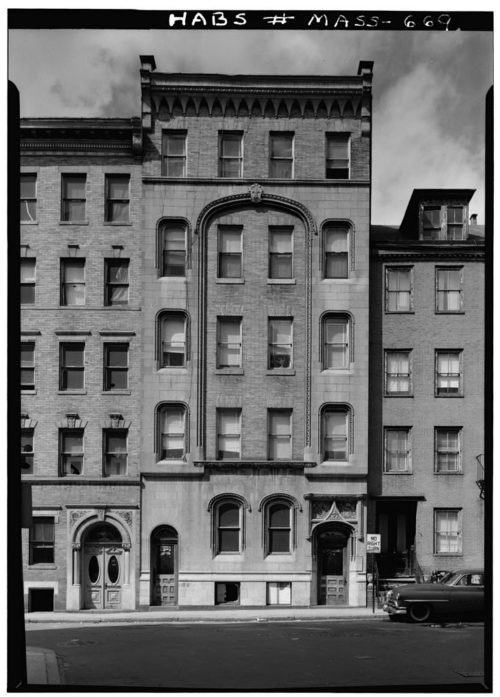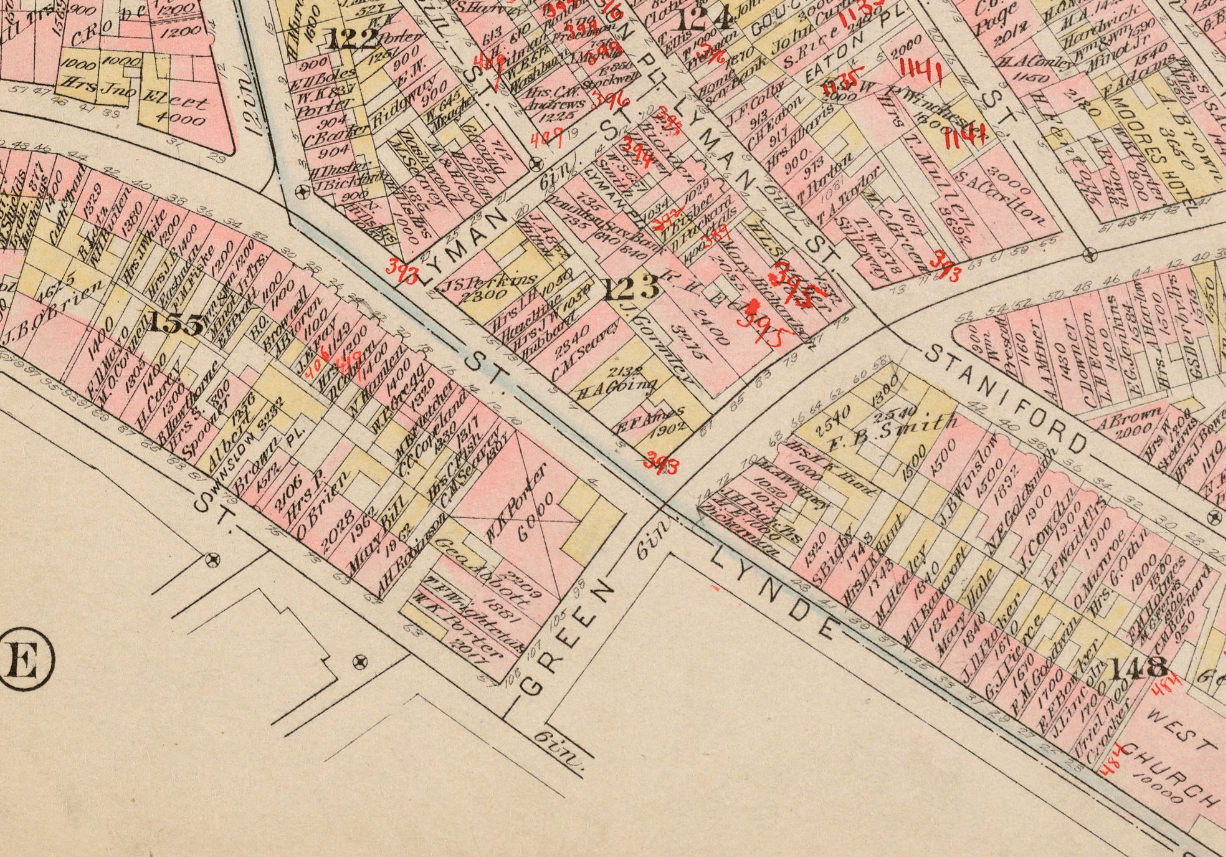William K. Porter
William K. Porter was an old West Ender who had made millions in real estate by the early twentieth century. Although Porter and his family moved to Commonwealth Avenue in 1906, he continued to manage a livery stable and all of his properties in the West End.
William K. Porter was born in Lyman, New Hampshire in 1836, and moved with his parents to Thetford, Vermont when he was two years old. His family was poor, and he worked on a farm as a teenager making $1 a week. Around the time he turned 18, Porter moved to Boston and lived for three years in Charlestown before spending almost 50 years in the old West End. Porter started accumulating wealth by buying and selling horses, and soon formed a partnership with Moses Emerson, fellow West Ender, to expand the business. The firm Emerson & Porter resided on 219 Friend St. and lasted for thirty years. In 1864, Porter married Arline Pickett and lived on 3 Allen Street in the old West End. They had five children, three of whom died young. Porter continued to run a livery stable (where owners of horses would pay Porter to keep them there) on 89 Green St. as of 1887. But it was dealing real estate, not horses, that made Porter a millionaire in the West End. From 1891 to 1906, Porter bought up enough real estate that he was considered to have owned more separate parcels, many of which in the West End, than anyone else in Boston at the time.
In 1906, when a seventy-year-old Porter and his family moved out of the West End to 78 Commonwealth Avenue, the Boston Globe covered Porter’s “Half Century in the West End” including the millionaire’s recollections of the neighborhood. According to the Globe, when Porter moved to the West End in the 1840s, it “was a most fashionable quarter, as well as the residential section for well-to-do families.” Many of those families were related to notable figures during the colonial and revolutionary periods. The West End became a wealthy neighborhood after the City of Boston filled in the Mill Pond in 1807. In 1808, architect Charles Bulfinch designed the lots and streets of the area that became known as the Bulfinch Triangle. Although Porter moved, he continued running his stable in the West End. As the Boston Globe wrote, “Accordingly, with reluctance he moves, but yet filled with more or less satisfaction in continuing business at the West End.”
Why did Porter move out of the West End with great reluctance? The substantial population growth resulting from immigration steered Porter and his Brahmin family toward moving out. The Boston Globe’s report did not hint at any nativist attitudes, for they put it simply that “the ceaseless hum and bustle of the world on the outside has become such as to threaten the nerves and health of [Porter’s] estimable wife and family.” Immigration to the West End increased the neighborhood’s density (the population grew to 28,000 in 1895 from 1,456 in 1770), but wealthy Bostonians sought out new neighborhoods that were smaller and quieter. The late 1850s led to a sudden growth in the Irish population, followed by large waves of Jewish, Italian, Greek, and Polish immigrants in the 1890s. In the Globe’s words, Porter found that “what was a comparatively quiet neighborhood up to 40 years ago [1876] has been transformed into a community where noise now never ceases.” The noise of street peddlers, milkmen, children playing in the streets, and electric-powered trolley cars constituted a “strange contrast with the past, and such as was never anticipated by the staid old citizens of 50 years ago [1850s].” As neighborhoods change, so do the reasons that residents come to enjoy them. West Enders in the twentieth century would look fondly on the masses of people selling their wares in the streets or playing outside.
Porter died in May 1912, and his wife Arline lived at 78 Commonwealth Avenue until 1919 when she moved to the Hotel Vendôme, a luxury hotel in the Back Bay. The fact that the Porter family lived in the West End for fifty years, and only moved out in 1906, shows that some upper-class Bostonians lived alongside immigrants in the West End for many years before deciding to move out. Porter’s livery stable and real estate portfolio were deeply connected to the neighborhood, and Porter would not be the only person to live outside the West End yet own a business there. The old West End may thus have been more important to the economy of twentieth-century Boston than what the Boston Redevelopment Authority’s later declaration of a “slum” (in 1957) would suggest.
Article by Adam Tomasi
Source: ProQuest (“Half Century in the West End,” Boston Globe, May 20, 1906, page 26), The Boston Directory (Sampson & Murdock, 1887), Back Bay Houses (“78 Commonwealth”); “Causeway Street: Where Did the Water Go?” (The Next Phase Blog)









